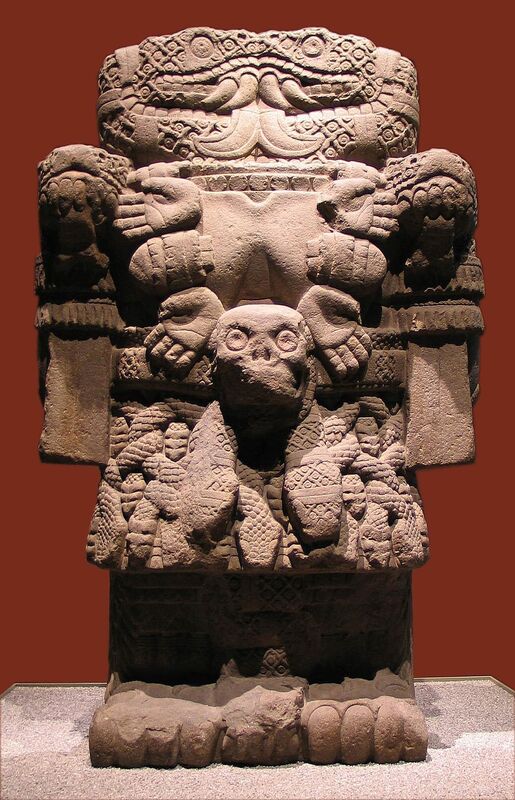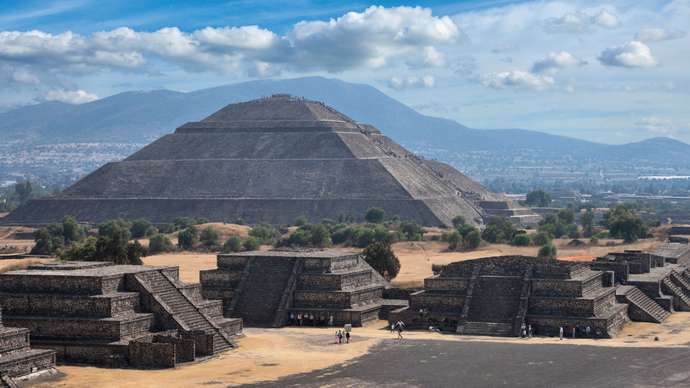Influence from the Aztec Civilization
An important civilization for the development of Mexico’s national identity was through the connection to the Aztecs. This connection was originally the most important aspect of their art until they became more “hybrid” and “civilized” through the colonization of the Spanish, and were influenced through how the role of ethnography and location played into how their culture was viewed. These were derogatory terms used to imply that Mexico and its people were barbaric and savages, which were reinforced by the artwork of past civilizations like Coatlicue. The statue of Coatlicue, a goddess whose name meant skirt of snakes, was buried when the Spanish came to colonize Mexico, it was later found and moved to the University of Mexico before being re-buried due to the fear that it is implicit of Mexico’s uncivilized culture that the colonizers had been suppressing. It was later recovered and eventually was moved to the National Museum of Mexico. This statue was elaborately designed to tell the story of the deity Coatlicue. When she was pregnant with her son, her daughter was jealous and decided to cut off the head of the deity. According to their myth, when Coatlicue’s head was cut off her son was born out from this wound fully grown. The profile of two snakes then took over to serve as the head for Coatlicue. In the Aztec culture snakes were also symbolic of blood. There is a band of dots surrounding the neck to show that she was decapitated. While the past cities in Mexico showed their ability to be cultured and colonized, it also was used to show how different they were from enlightened civilizations of the present. While the Aztecs had built a great city with sets of buildings and a hierarchy in their culture, they still had these “barbaric” tendencies of sacrifice and intimidation. When conquering Mexico, the colonizers recognized the incredible work that went into the Aztec’s formation of the city through uses of temples, structures, and altars. While this was created in the past, it gave them hope for civilizing the current day Mexico. By latching onto this past they are able to show where they have come from and that their culture has always been advanced in architecture, while also being able to ignore the darker connotations of their culture that colonizers would focus on.

